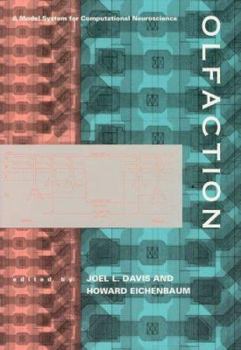Olfaction: A Model System for Computational Neuroscience
Select Format
Select Condition 
Book Overview
Computational neuroscientists have recently turned to modeling olfactory structures because these are likely to have the same functional properties as currently popular network designs for perception and memory. This book provides a useful survey of current work on olfactory system circuitry, including connections of this system to brain structures involved in cognition and memory, and describes the computational models of olfactory processing that have been developed to date. Contributions cover empirical investigations of the neurobiology of the olfactory systems (anatomy, physiology, synaptic plasticity, behavioral physiology) as well as the application of computer models to understanding these systems. Fundamental issues in olfactory processing by the nervous systems such as experimental strategies in the study of olfaction, stages of odor processing, and critical questions in sensory coding are considered across empirical/applied boundaries and throughout the contributions. ContributorsI. Fundamental Anatomy, Physiology, and Plasticity of the Olfactory System, Gordon M. Shepherd. John S. Kauer, S. R. Neff, Kathryn A. Hamilton, and Angel R. Cinelli. Kevin L. Ketchum, Lewis B. Haberly. Joseph L. Price, S. Thomas Carmichael, Ken M. Carnes, Marie Christine Clugnet, Masaru Kuroda, and James P. Ray. Michael Leon, Donald A. Wilson, and Kathleen M. Guthrie. Gary Lynch and Richard Granger. Howard Eichenbaum, Tim Otto, Cynthia Wible, and Jean Piper. - II. Developments in Computational Models of the Olfactory System, DeLiang Wang, Joachim Buhmann, and Christoph von der Marlsburg. Walter Freeman. Richard Granger, Ursula Staubi, Jos Ambrose-Ingersoll, and Gary Lynch. James M. Bower. Dan Hammerstrom and Eric Means.
Format:Hardcover
Language:English
ISBN:0262041243
ISBN13:9780262041249
Release Date:November 1991
Publisher:Bradford Book
Length:331 Pages
Weight:1.95 lbs.
Dimensions:1.0" x 7.3" x 10.3"
Age Range:18 years and up
Grade Range:Postsecondary and higher
Related Subjects
Medical Medical Books Science Science & Math Science & Scientists Science & TechnologyCustomer Reviews
1 rating
Smell provides the insight into mechanics of cortex
Published by Thriftbooks.com User , 24 years ago
It is shown how the synaptic connections of the piriform cortex are analogous to the input and recurrent connections of classical autoassociative memory. Processing units are the pyramidal cells in piriform cortical layers II and III. The dendrites of these pyramidal cells extend into piriform layer I. Piriform layer Ia (lateral olfactory tract, LOT, input from the olfactory bulb) synapsing with the pyramidal dendrites, represent the input connections to the autoassociative memory. Recurrent excitatory axons from the pyramidal cells projecting to piriform layer Ib and synapsing with the dendrites of multiple pyramidal cells, represents the recurrent connections of the autoassociative memory.





